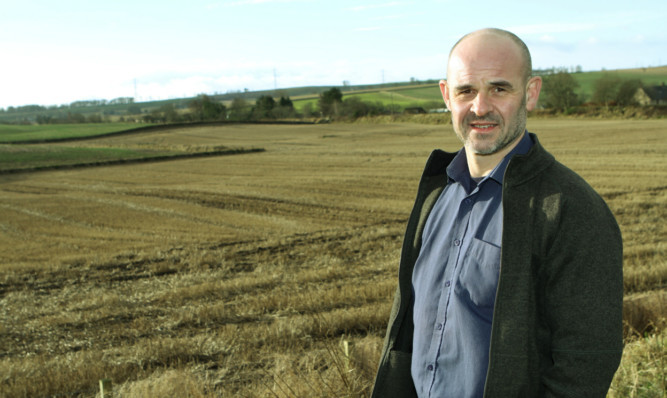The protestors armed with scythes sneaked into the field under cover of darkness.
At face value it looked like any other yellow oil seed rape crop growing in north Fife. But in the eyes of activists, this ‘Frankenstein’ crop was an environmental catastrophe waiting to happen and had to be destroyed.
“This is a shout of the people’s defiance against the madness of genetically modified (GM) farming,” a spokesperson for the protestors declared in 2002 after part of the non-commercial GM crop trial near Newport was partially ripped up.
Depending on who you believe, GM crops are either going to cure world hunger and save the planet’s much maligned bee population, or they are going to lead to eco-system Armageddon, give rise to pesticide resistant insects and see us all wiped out by cancer causing cuisine.
But remarkably almost 14 years after the Newport protests, the debate over GM crops remains unresolved.
According to the United Nations World Food programme, there are 795 million undernourished people in the world today and it’s likely to get worse.
With the world’s population expected to burgeon from seven to 11 billion by 2050, one remarkable statistic suggests that the next 50 years will require the human race to produce the same amount of food as it has done in the whole of the last 10,000 years just to feed the population. And the crisis will likely only deepen thereafter.
It’s a bleak prognosis. But could the production of GM crops hold the key to staving off mass starvation?
It shouldn’t really come us a surprise that GM has become such a hot topic.
We all need to eat, and all need to eat healthily.
But according to Professor Ian Toth, a plant pathologist specialising in crop disease prevention at the James Hutton Institute, Invergowrie, the industry itself has to do more to explain the “misunderstandings” for and against GM technology.
And it’s sensible discussion he is looking forward to when he speaks at a special East Neuk debate on Wednesday February 17.
“GM is the ability to modify the DNA of an organism to our benefit, and the potential benefits are massive, “he told The Courier.
“But just because I am in favour of considering GM as one of the tools that should be used as an alternative means of producing food, I don’t presume everyone else should be in favour. My job and that of others is to speak to people and explain what we are trying to do and to appreciate and understand what their concerns are.”
As a plant pathologist, Professor Toth has been working for many years researching crop diseases and new ways of solving them. For 70 years Europe has been dependent on synthetic pesticides. That’s a major reason why the continent now has one of the best agricultural systems in the world. Yet the European Union wants to reduce the use of chemicals because of perceived environmental damage. There is also unconfirmed evidence that pesticides could be the reason why the bee population, vital for pollination, is in decline.
One of the specific areas Professor Toth has been researching is prevention of late blight disease that caused the Irish potato famine in the 1840s. If a single gene can be carefully moved from one potato into another potato, a plant could be created that is resistant, that is 100% potato and that wouldn’t need to be sprayed with pesticide anymore.
And yet Professor Toth is aware that serious concerns about GM methods persist. One fear is that herbicide resistant GM crops are spreading resistance to local weed populations, and that pesticide resistant insects are being created. But perhaps the main concern is that GM crops have been shown to spread their genes amongst other crops.
Last August the Scottish rural affairs secretary Richard Lochhead announced that Scotland is to ban the growing of GM crops because the Scottish government was not prepared to “gamble” with the future of the country’s £14bn food and drink sector.
“I think it’s absolutely fine to have concerns, “added Professor Toth, “but I think there has been misunderstanding of what GM crops are, and people imagine they are a lot worse than they actually are. They are not actually that exciting!
“Interfering with nature and ‘playing God’ is the main concern. But the more we understand about nature the more we can harness it to our advantage. And we also realise that a lot of these changes happen naturally in nature all the time.
“GM crops have been grown for over 20 years and now cover 12% of the global cropping area. So far there’s no evidence that these crops have caused harm to humans, animals or the environment, so that should at least give us some confidence in considering their continued use in the future”
GM is already with us. Around 70% of protein animal feed in Europe, around 1% of Spanish maize and most of the cotton produced in China and India have GM origins.
When the USA lost 45 million tonnes of grain during a drought in 2012, bumping up global food prices including Britain, GM research developed a drought tolerant maize the following year to try and prevent a repeat.
But the debate on whether GM crops should be commercially developed continues offering food for thought.
The East Neuk Debate takes place in St John’s Episcopal Church, Pittenweem, at 7.30pm on February 17. For ticket information contact christopher@smout.org
